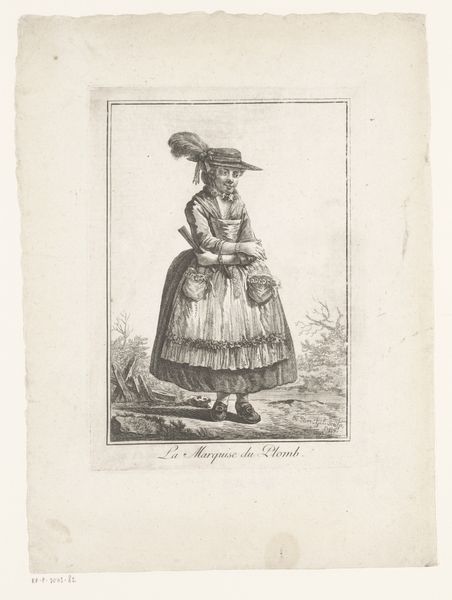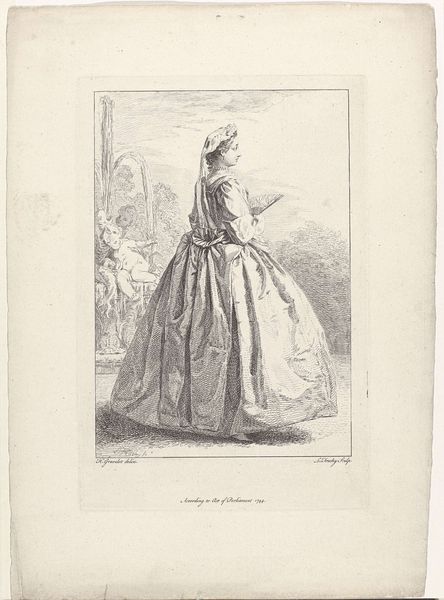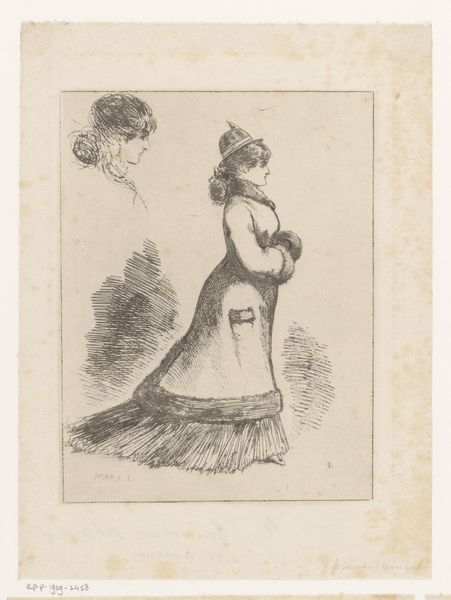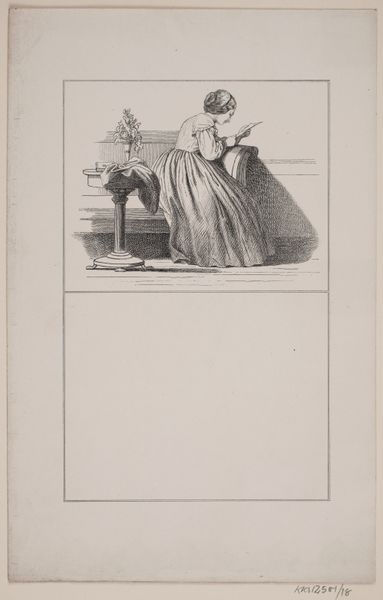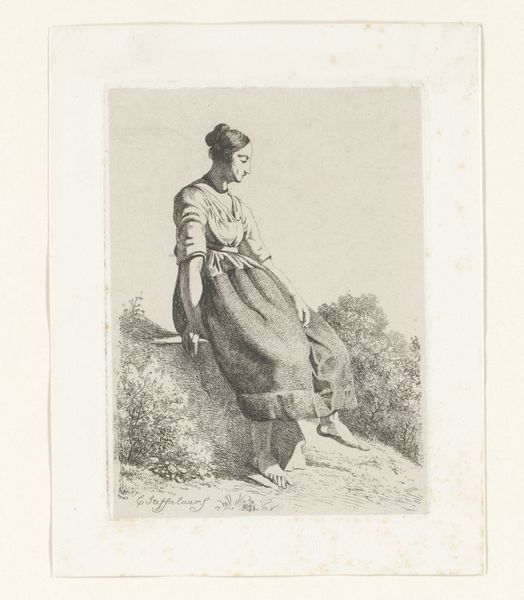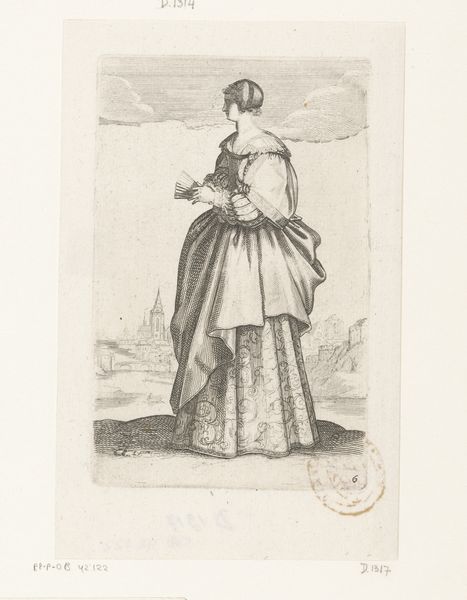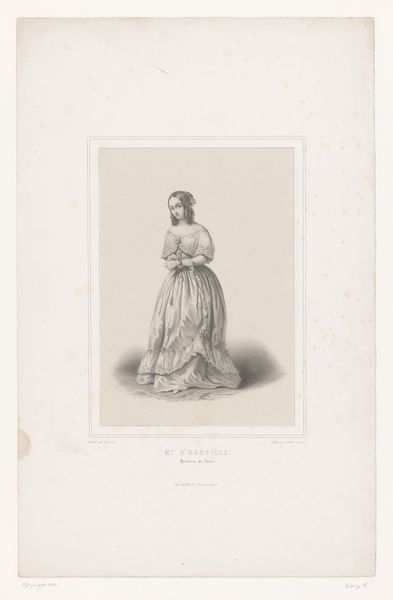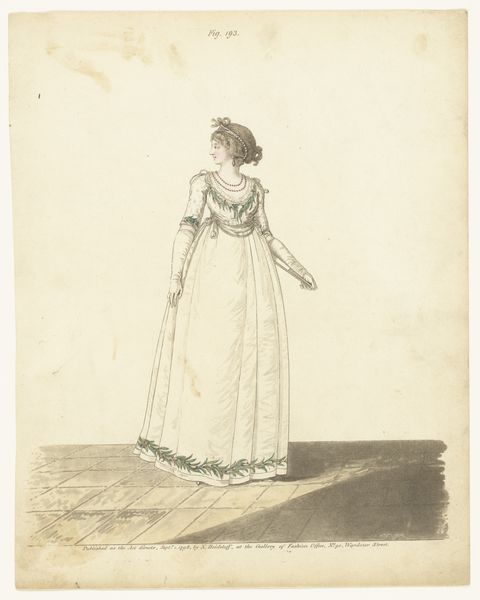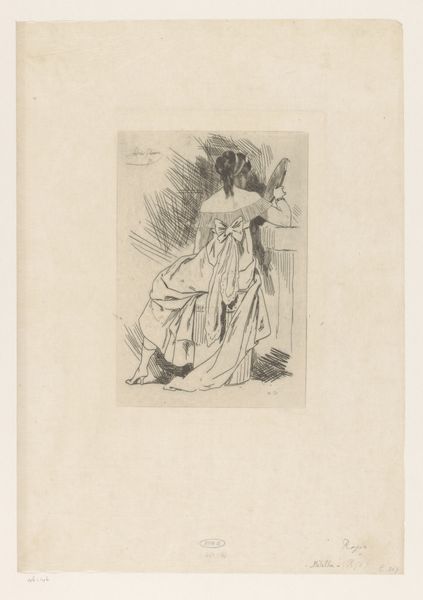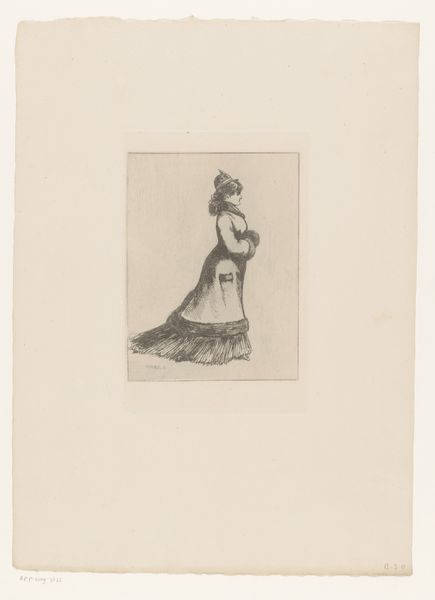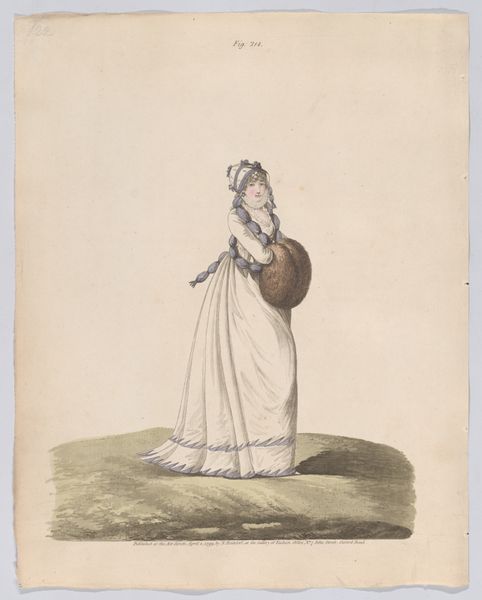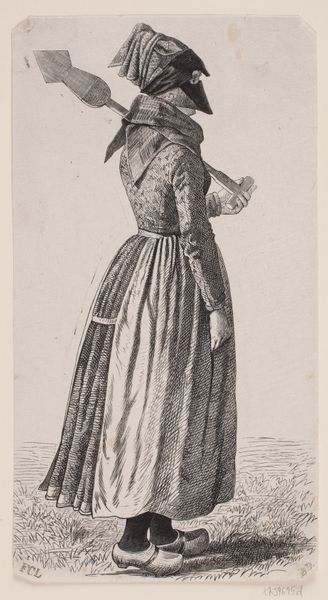
drawing, print, engraving
#
portrait
#
drawing
# print
#
genre-painting
#
engraving
#
realism
Dimensions: height 112 mm, width 93 mm
Copyright: Rijks Museum: Open Domain
Curator: This engraving, dating from between 1807 and 1861, is titled "Knielende boerin" by Cornelis Steffelaar. Editor: Immediately, I'm struck by the figure's placement, how she's both grounded yet separate from the sparse background. It evokes a feeling of isolated labor. Curator: Absolutely, consider the laborious process of creating this print. The lines, etched meticulously into the metal plate, convey a sense of painstaking effort. Steffelaar chose engraving to depict the life of this kneeling farmer. It's a clear attempt at realism, even though idealized to a degree. We see a genre scene here, reflecting increasing urban interest in agrarian lifestyles. Editor: For me, the play of light and shadow created by those very lines is compelling. The hatching and cross-hatching around her dress and the basket beside her build depth and volume with amazing formal precision. There's also her gaze, directed at the viewer, making the piece something more than just an illustration of rural labor. Curator: The question is, how accurate is the depiction? Were these scenes used to comment on labor practices, or were they mostly just catering to city dwellers? This print would have been a consumer item, meant to decorate a middle class home, showing that the rural labor was becoming commodified and a status symbol, in a way. Editor: Well, even if somewhat idealized, there's still an emotional core at the center of the work. The way she is looking at the viewer implicates them, perhaps evoking something about duty, or empathy. Note too that restricted, nearly monochrome palette; it directs your eye toward a visual dance of shadow and shape defining the woman and basket. Curator: I agree with that. Even without precise historical accounts from rural populations about their conditions at the time, the art still creates opportunity for awareness. A new consumer could purchase Steffelaar’s work and confront the rural world in an artistic sense. Editor: Exactly. The starkness compels an analysis from all perspectives, highlighting not only artistic creation but also a potential moral experience through formal means. Curator: Right. When we analyze how and why a piece of art like this gets made, we see labor as something that gets transformed from agricultural practices to artisanal craftsmanship. Editor: Seeing the print with that context makes it all the richer. The act of observing reveals unexpected dimensions of form and structure and ultimately illuminates both history and material being.
Comments
No comments
Be the first to comment and join the conversation on the ultimate creative platform.

